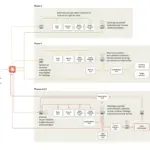In an era where immersive learning is becoming increasingly essential in higher education, the collaboration between technology providers and institutions is vital. A recent case study from the University of North Carolina Greensboro (UNC Greensboro) highlights how strategic partnerships can pave the way for innovative educational experiences through the deployment of virtual reality (VR) technologies.
Overcoming Initial Hurdles
Initially, the IT department at UNC Greensboro blocked VR goggles from their network, encountering significant challenges in integrating this technology into their educational framework. In response, CDW opened its Greensboro office for the team twice a week during the summer, providing them with a dedicated space to develop their pilot program and secure buy-in from various stakeholders.
CDW’s involvement went beyond merely supplying headsets; they performed network assessments and implemented mobile device management (MDM) for the Meta headsets, ensuring that these devices could be securely and effectively integrated into the university’s existing infrastructure. As a result, the IT team became more comfortable with the new technology that had initially seemed foreign.
“Once we showed how they could be secured, updated, and fully managed, the IT team came around, and we were off to the races,” explained a CDW representative. This shift in perspective was crucial, as it encouraged a mindset that treats VR goggles similarly to traditional devices like laptops and smartphones. They require policy enforcement, software updates, network visibility, and optimization—areas where CDW’s full-stack support proved invaluable.
Expanding Educational Applications
The potential applications of VR and AI technology at UNC Greensboro are impressive. The Bryan School of Business now offers courses in AI and cybersecurity, alongside immersive communication training. The nursing school employs VR for teaching complex medical procedures such as needle insertion and heart anatomy, allowing students to learn without needing direct patient interaction. Additionally, the dental school is developing its own VR applications, showcasing a broad commitment across various disciplines to integrate immersive technology into the educational experience.
This momentum has led to further recognition for UNC Greensboro, including a grant for innovative immersive learning. HTC has also reached out to support the university with a significant investment aimed at expanding these projects even further.
Keys to Scaling Immersive Learning
The trajectory of immersive learning in higher education mirrors that of esports, evolving from a niche initiative to a strategic priority. CDW is assisting institutions in establishing immersive rooms that utilize large-scale displays and AI avatars, bypassing the need for goggles entirely. This innovation allows for real-time conversations and collaborative efforts without the use of VR headsets.
However, successful implementation requires more than just hardware. Institutions need to focus on several critical factors for effective scaling:
- Network throughput assessments to ensure that cloud-based VR experiences are seamless and free from lag.
- Security-first provisioning, incorporating MDM from the outset to secure devices effectively.
- Hardware flexibility, ensuring compatibility with various technologies including Meta and Apple Vision Pro.
- Comprehensive support before and after sales from specialized technology teams like CDW’s higher education specialists.
Furthermore, integrating data analytics becomes essential to track educational outcomes, such as whether students are progressing more rapidly, retaining information better, or persisting through challenging coursework at higher rates compared to traditional learning methods.
Universities eager to explore similar initiatives should prioritize collaboration and early-stage support. Engaging with other higher education institutions for feedback, along with involving IT and vendor partners in discussions about long-term strategy and departmental deployment, can significantly enhance the chances of success. The integration of infrastructure with instructional strategies is a pivotal aspect of this transition.
In conclusion, the journey of integrating immersive learning technologies like VR into higher education is complex but rewarding. As demonstrated by the efforts at UNC Greensboro, strategic partnerships and a clear focus on infrastructure, security, and educational outcomes can help institutions harness the full potential of these transformative technologies.
 Chinese State Hackers Deploy AI in Unprecedented 30-Target Cyberattack, Warn Experts
Chinese State Hackers Deploy AI in Unprecedented 30-Target Cyberattack, Warn Experts CASPER AI Launches with Context-Aware Cyber Threat Detection for Enhanced Security
CASPER AI Launches with Context-Aware Cyber Threat Detection for Enhanced Security Google Launches AI Security Frameworks and Scam Protection Tools for India’s Digital Economy
Google Launches AI Security Frameworks and Scam Protection Tools for India’s Digital Economy Türk Telekom Accelerates AI-Driven Cybersecurity Investments, Blocking 2,620 Attacks in 2023
Türk Telekom Accelerates AI-Driven Cybersecurity Investments, Blocking 2,620 Attacks in 2023 AI-Powered Cybersecurity Tools Achieve 95% Detection Accuracy in Real-Time Threat Response
AI-Powered Cybersecurity Tools Achieve 95% Detection Accuracy in Real-Time Threat Response












































































